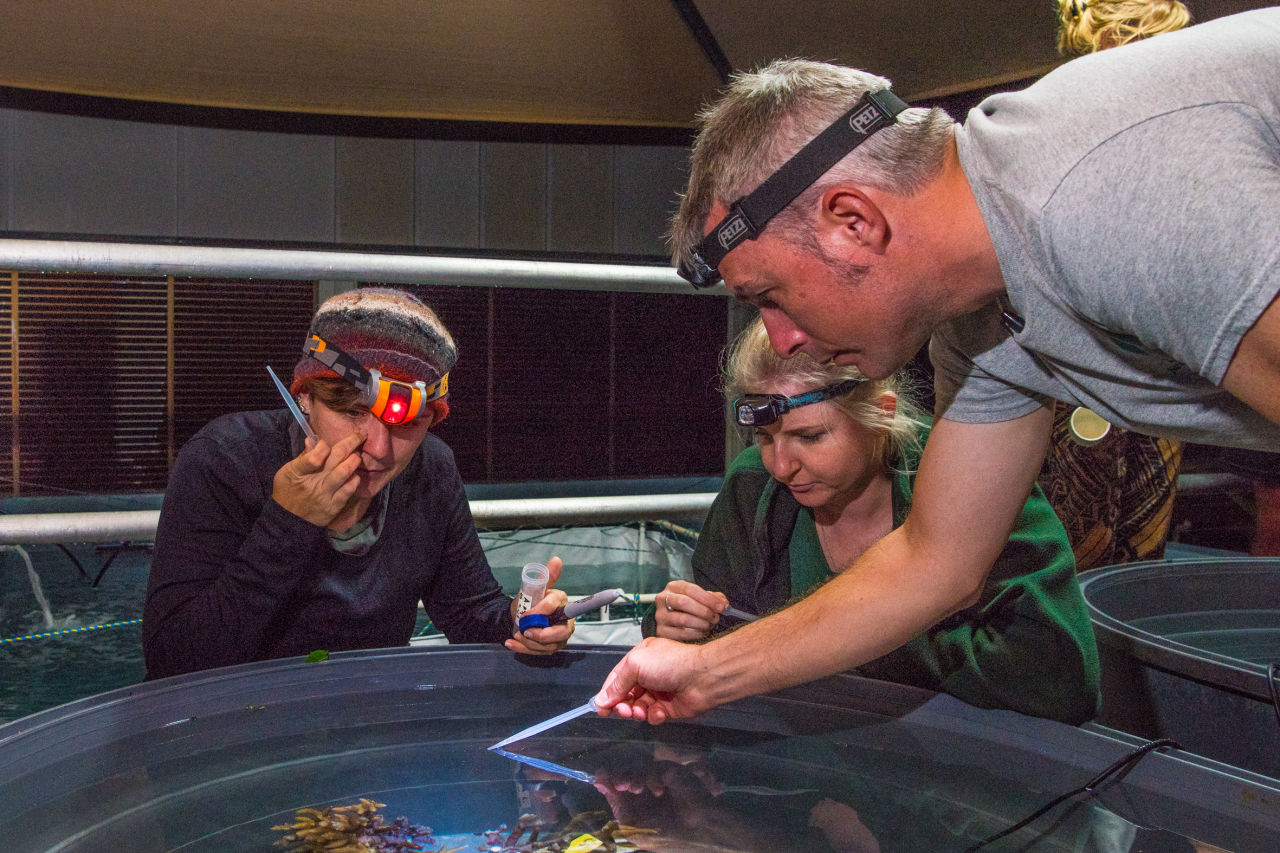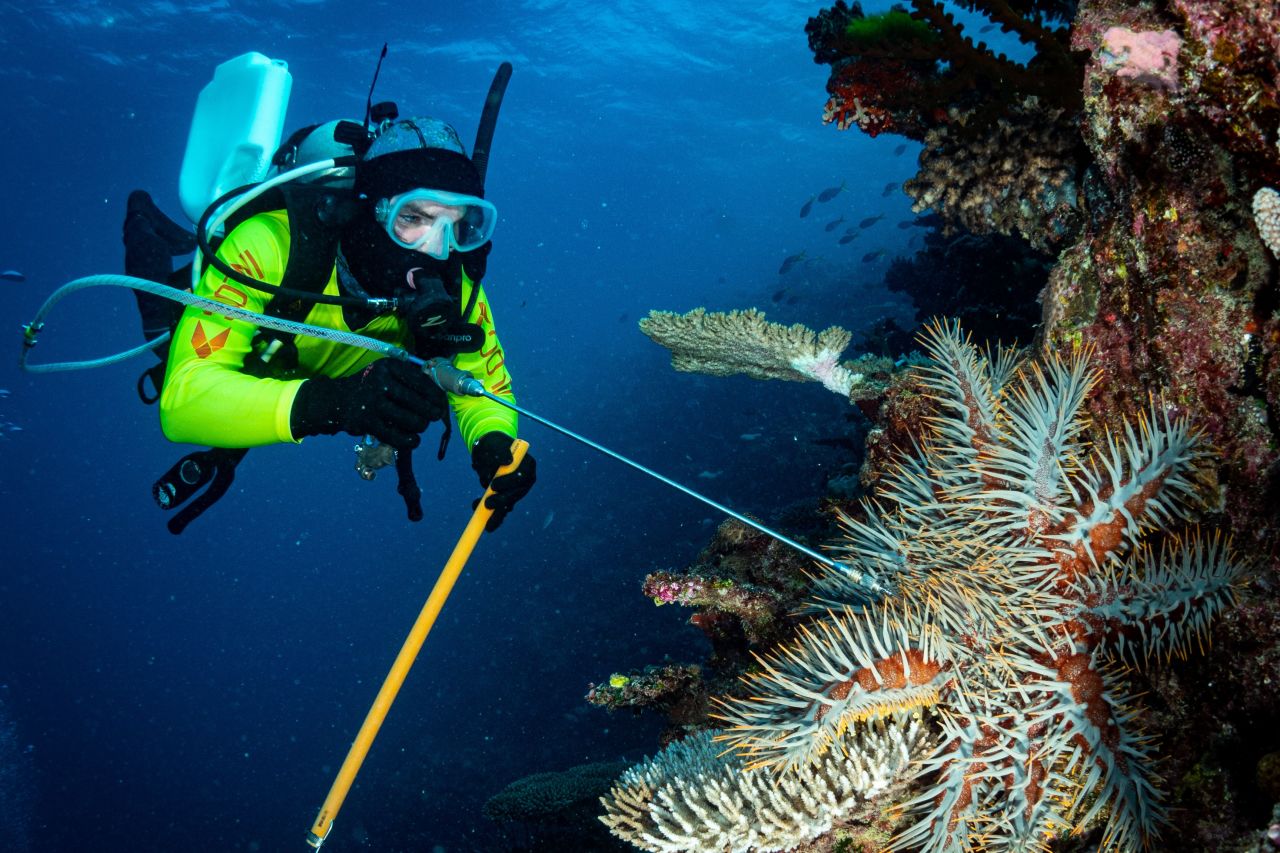Record high coral cover on the Great Barrier Reef. Rapid growth of hard corals. Strong recovery from bleaching events. At first glance, the results from the Australian Institute of Marine Science’s monitoring program provide great hope for the Reef’s future, but a deeper dive into the data reveals some concerning trends.
AIMS’s Long-Term Monitoring Program conducts annual surveys to record Reef health. In 2021/22, it found average hard coral cover in the northern and central Great Barrier Reef had increased to the highest levels ever recorded in the survey’s 36-year history.
While increased coral cover is great news, particularly in light of recent back-to-back bleaching events, scientists found the growth was primarily just one family of coral – a fast-growing branching coral called acropora.
Acropora corals are key habitat builders on the Reef, but their dominance is concerning for two reasons. The first is that coral diversity is essential to maintaining a healthy Reef ecosystem. The second is that acropora corals are particularly vulnerable to coral bleaching, storm damage and attack from coral-eating crown-of-thorns starfish, making the entire Reef more susceptible to future impacts of climate change and other serious threats.
Adding to these concerns, coral cover fell slightly in the southern Great Barrier Reef due to an ongoing outbreak of crown-of-thorns starfish, which can decimate healthy reefs. AIMS said a third of new coral growth in the southern region last year was destroyed by the predators.
These disturbances reinforce why our work to boost the resilience of corals in a changing climate and protect them from predators is so critical.
The threats facing our Reef, and coral reefs around the world, are significant, but importantly so too are our solutions. They’re buying the Reef time by helping it withstand the impacts of climate change while global greenhouse gas emissions are significantly reduced. And we’re sharing our knowledge with reef managers from around the world to help win this global fight.
Rising water temperatures have caused widespread coral bleaching on the Great Barrier Reef.
Reef Restoration
For the past five years, we’ve been working with researchers from six large research institutions and their many partners to develop innovative solutions that build coral reef resilience and help them adapt to their changing environment.
The Reef Restoration and Adaptation Program is the largest research and development effort of its kind on the planet and it’s our best hope of saving coral reefs.
Right now, we’re exploring ways to:
- Produce heat-tolerant corals that can better cope with higher water temperatures
- Preserve a diverse collection of coral species through innovative cryopreservation technologies, so we can grow corals outside of limited natural reproduction windows.
- Protect reefs from coral bleaching through cooling and shading techniques that reduce heat and light stress.
- Investigate new methods to stabilise damaged reef surfaces where corals have turned into rubble, to allow new corals to grow on them.
Already, we’ve identified new genetic markers that indicate a coral’s resilience in the face of heat stress and grown coral species with increased tolerance to warmer temperatures.
We’ve also deployed over 8 million coral larvae onto priority reefs to help repopulate them, and completed the first prototype testing of equipment designed to cool and shade the Reef.
We’re now progressing a range of solutions and developing ways to scale-up their on-water deployment.

Researchers pipetting coral eggs and sperm to be used for cryopreservation. Credit: Taronga
Controlling crown-of-thorns starfish
Outbreaks of crown-of-thorns starfish (COTS) are a major threat to the health of the Great Barrier Reef. Controlling outbreaks directly protects corals, helps boost coral cover and increases the resilience of the entire Reef ecosystem in the face of climate change.
Through the COTS Control Program, we’re protecting high-value reefs from coral loss by sending a fleet of vessels and more than 100 divers out on the Reef every day to survey and remove these predators.
But with a current outbreak still spreading across the Reef, and the next outbreak already developing, there is an urgent need to invest in research that improves our ability to manage outbreaks at scale.
Our COTS Control Innovation Program is bringing together Australia’s leading experts to collaborate on new solutions to the COTS threat. We’re developing the tools and technology needed to predict, detect and respond to these damaging outbreaks across the entire marine park, particularly in remote and difficult to access areas.
Effective COTS control is a critical part of the toolbox of interventions the Reef needs to cope with climate change. This program ensures that our investments in coral protection, adaptation and restoration are not undermined by COTS outbreaks.
Make no mistake – the Reef’s future is on a knife-edge, but we’re working tirelessly with more than 400 partners on over 300 world-leading projects to save it.








